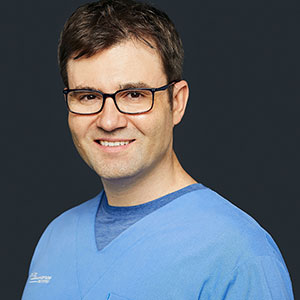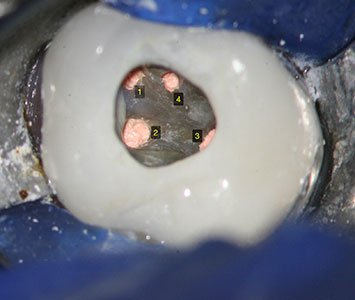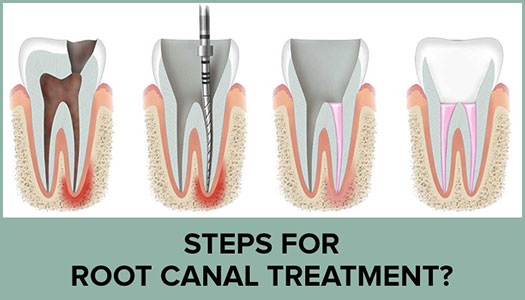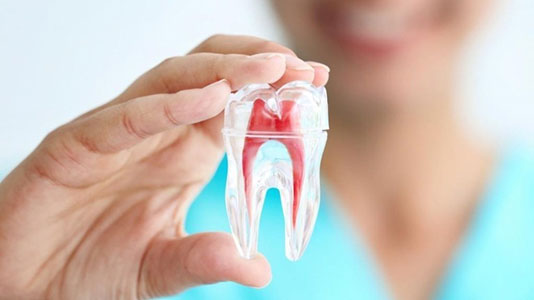One of St. Lawrence Dentistry’s goals is to help you avoid procedures like root canals and dental crowns. However, in some cases, they are needed.
A root canal through a dental crown is a subset of root canal treatment, requiring more time, skill, and specialized equipment to complete than a regular root canal treatment. Nevertheless, Dr. Hawryluk Jr. has performed thousands of successful root canal treatments under these circumstances.

Dental crowns are the most durable and anatomically correct type of dental restoration. They are the restoration of choice for a tooth that does not have enough tooth structure left to put a proper simple filling in place. The dental crown procedure involves shaving a tooth down about 1-2mm in all directions. This process is called the crown preparation and makes space for the porcelain crown. Reducing the tooth down can create trauma to the tooth nerve (dental pulp) — most of the time, the nerve recovers after one to two weeks. However, in some circumstances, the tooth nerve may not recover, which can necessitate the need for root canal treatment.

For more information on dental crowns, please visit us here:
Porcelain Crowns Mississauga On
Root canal treatment involves:
- Cleaning out the dental pulp of the tooth or its remnants.
- Sterilizing the space created by the cleanout.
- Fill it with Gutta Percha Rubber.

To learn more about the root canal process, please visit us here:
Microscope-Assisted Root Canals – What to Expect
It can be frustrating for someone who has already gone through the time and expense of having a dental crown placed to find out they also need root canal treatment. Fortunately, Dr. Hawryluk can often preserve your dental crown and do any required root canal treatment while keeping your dental crown in place.

The first step involves making an opening through your crown. Next, Dr. Hawryluk will gently remove some of the porcelain (and possible metal) to access the tooth underneath. The dentist accomplishes this step slowly to minimize any stress on the surrounding porcelain to reduce any craze lines. Next, the canals will be located and cleaned out. Using a dental microscope is critical when doing root canals through dental crowns as visibility is often reduced compared to working through teeth without crowns. After cleaning the root canal system, the doctor will completely sterilize and seal the canals. Finally, the opening through the crown is closed with composite resin.
It would be our pleasure to serve you. Please let us know if you would like to discuss this topic further.









